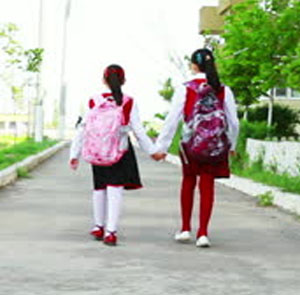Dr. Hyman offers the following guidelines to help parents prevent potential back injuries from overweight backpacks:
- A backpack shouldn’t weigh more than 15 percent of the child’s weight, or about seven pounds for a child who weighs 50 pounds. If textbooks are making the bag too heavy, parents should speak with the teacher — sometimes books can be left at school.
- Children should wear their backpack over both shoulders to spread weight evenly. Alternatively, consider a wheeled backpack.
- Be sure that the backpack is the correct size for your child. The backpack should not be wider or longer than the child’s torso, and should not hang more than 4 inches below the waistline. A backpack that hangs too low increases the weight on the shoulders, causing the child to lean forward when walking.
- Be sure that the backpack has wide, padded shoulder straps and a padded back. The shoulder straps should be adjusted so the backpack can be fitted to your child’s body and a padded backing provides increased comfort and protects the child from being injured by the sharp edges on some school supplies.
“Parents should inspect their child’s backpack from time to time. They often carry much more than they should with extra shoes, toys, electronic devices and other unnecessary items,” says Dr. Hyman.
If the child experiences persistent pain, parents should consult their pediatrician, who may recommend physical therapy to strengthen the back muscles. Some indicators of trouble include changes in the child’s posture while wearing the backpack, difficulty putting on the backpack, and pain, tingling or red marks.

















Related Items
Top tips to protect your home from fire
Did you try these tips to save your money..!
Top five tips to make your solo trips unforgettable